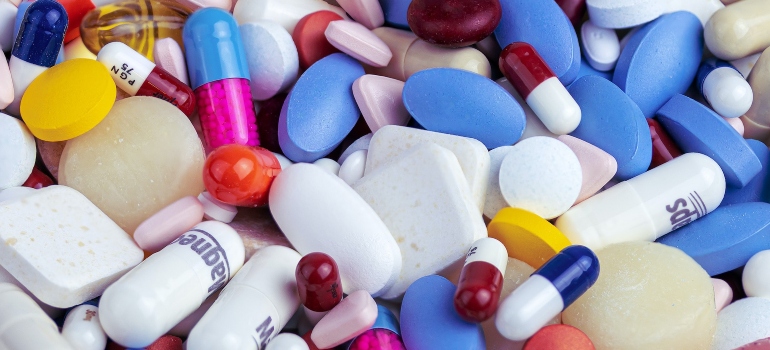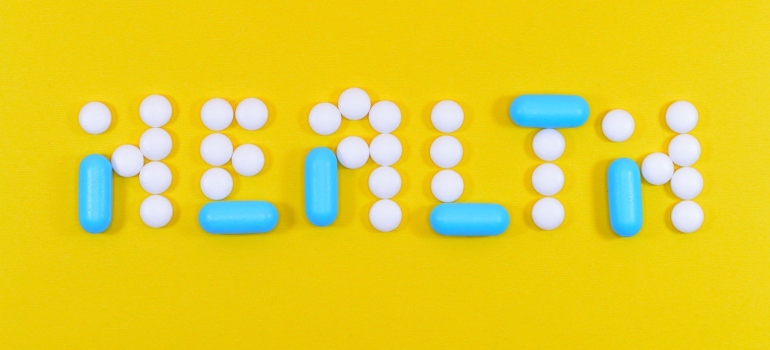In the complex world of substance use, polydrug use represents a particularly ominous undercurrent. This practice involves the simultaneous use of multiple substances, and it is more common than most of us realize. The unveiling of the hazards entwined with polydrug use is not only a matter of personal importance for those who indulge in this practice but also a critical issue for public health and societal well-being. By delving deeper into the effects of combining alcohol with other drugs, we bring much-needed awareness to this underestimated issue. This exploration equips us with the knowledge necessary to make more informed decisions, ultimately safeguarding our health and the well-being of those around us.
Everything You Need to Know About the Dangers of Combining Alcohol with Other Drugs
In the context of our fast-paced and high-stress society, alcohol often serves as a social lubricant and a means of relaxation. However, the associated risks surge when alcohol becomes a component in the polydrug use equation. This term, defined by the simultaneous use of multiple substances, amplifies the potential dangers inherent to alcohol consumption.

Whether it’s a social drinker experimenting with a new substance during a weekend gathering or an individual grappling with the shackles of substance dependence, the effects of combining alcohol with other drugs can affect anyone. Consequently, embarking on this journey of exploration into the vast and somewhat shadowy landscape of polydrug use becomes a vital task. Such an exploration can help us better understand the magnitude of the issue, thereby promoting healthier choices and inspiring more focused and efficient interventions.
Understanding Polydrug Use
Polydrug use is not a new phenomenon. Yet, the sheer breadth of substances available today, from prescription drugs to illicit narcotics, means that the landscape of this occurrence is constantly evolving. It is no longer as simple as combining a shot of tequila with a marijuana joint; the combinations are as numerous as they are varied. As this is a major cause for concern, let’s shed some light on this problem and raise awareness.
Prevalence of Polydrug Use
The phenomenon of polydrug use is perhaps more widespread than generally assumed. It continues to engrave its presence on the public health landscape. Recent research reveals a rather staggering truth: a substantial fraction of individuals grappling with substance use disorders often find themselves intertwined in the complex web of abusing more than one type of drug. Within this constellation of substance combinations, alcohol frequently emerges as a central figure. This emphasizes the critical necessity to dissect the risks associated with this widespread practice.

The wide prevalence of polydrug use is not just a statistic but a signal, an urgent call to action that requires a comprehensive response from various sectors of society. It underscores the need for dedicated research to understand the complexities of this issue, the development of tailored treatments by clinicians, and the cultivation of a societal ethos that supports recovery and reduces stigma. With the prevalence of polydrug use serving as a stark reminder of the urgency at hand, it is clear that concerted efforts are necessary to address this escalating public health concern.
Types of Drugs Commonly Combined with Alcohol
In the sphere of polydrug use, certain substances are more frequently combined with alcohol than others. Each pairing carries its unique set of risks and repercussions, making it essential to recognize and understand these common combinations.
- Benzodiazepines: Often prescribed for anxiety or insomnia, benzodiazepines like Xanax or Valium, when combined with alcohol, can heighten the sedative effects. This can lead to extreme drowsiness, impaired motor control, or even unconsciousness. Such combinations frequently necessitate benzo addiction treatment to counteract dependency.
- Opioids: Substances like heroin or prescription painkillers such as OxyContin or Vicodin are potent analgesics. Mixed with alcohol, they can compound the risk of respiratory depression, potentially leading to a fatal overdose.
- Cocaine: The stimulant effects of cocaine might seem to counterbalance alcohol’s depressant effects. However, this combination can create a false sense of sobriety and increase the risk of alcohol poisoning or heart complications.
- Amphetamines: Similar to cocaine, amphetamines like Adderall or methamphetamine may lead to an illusory feeling of sobriety when mixed with alcohol, fostering harmful patterns of consumption.
- Marijuana: Despite its reputation for being relatively harmless, marijuana can interact unpredictably with alcohol. This combination can intensify the effects of both substances, leading to extreme intoxication, dizziness, and nausea.
- Hallucinogens: Combining alcohol with hallucinogens such as LSD or psilocybin can result in heightened anxiety, confusion, and potential psychological distress due to unpredictable interactions.

Understanding the unique effects of these commonly combined drugs provides a clearer picture of the potentially dangerous terrain of polydrug use. Such knowledge can help shape more informed decisions and create more effective prevention and treatment strategies.
The Various Effects of Combining Alcohol with Other Drugs
Now that we’ve established the prevalence and types of polydrug use, it’s time to examine the profound impact this practice can have. Combining alcohol with other drugs can give rise to a host of effects, from the intensification of certain symptoms to the onset of new, unexpected reactions.
These interactions can be split into different categories based on the nature of the drugs combined with alcohol: depressants, stimulants, and others. Each of these categories carries a distinct set of risks and repercussions. So let’s delve deeper into these combinations and their potential consequences.
Depressant Effects
There are two combinations of alcohol and other drugs that cause depressant effects:
- Alcohol and Benzodiazepines
- Alcohol and Opioids
Alcohol and Benzodiazepines
Alcohol, in and of itself, acts as a central nervous system depressant. When combined with other depressants, such as benzodiazepines used for anxiety or insomnia, the effects can be compounded, leading to intensified sedation and impaired motor function.

This combination can also depress respiratory function, a life-threatening effect if left unchecked. Seeking benzodiazepine addiction treatment can be a critical step toward recovery for those caught in the grip of this perilous mix.
Alcohol and Opioids
Opioids are another class of drugs that, when combined with alcohol, can lead to severe respiratory depression. The Harmony Ridge Recovery Center WV has witnessed firsthand the life-threatening effects of this combination. Furthermore, alcohol can potentiate the euphoric effects of opioids, making the combination all the more appealing and, tragically, all the more deadly.
Opioids, such as heroin or prescription painkillers, are primarily known for their powerful analgesic effects. However, they also possess a pronounced depressant effect, slowing essential bodily functions such as respiration. When these substances are combined with alcohol, another potent depressant, the effects can be dangerously compounded.
The sedative effects of alcohol and opioids are not merely additive but multiplicative. This means that the drowsiness, slowed breathing, and decreased cognitive function experienced under the influence of these substances are not just increased but amplified to a hazardous extent. The result can be an incredibly high risk of respiratory depression, a condition that, in severe cases, can lead to coma or even fatal overdose.
Therefore, it is crucial to understand the gravity of combining these substances and the immediate danger it poses to an individual’s health. This combination calls for urgent intervention, often necessitating a robust plan for opioid and alcohol treatment, like the services offered by alcohol rehab in WV. Ultimately, awareness of this lethal mixture can inform safer choices and encourage timely access to treatment.
Stimulant Effects
The two common combinations of alcoholic drinks and other drugs that cause stimulant effects are:
- Alcohol and Cocaine
- Alcohol and Amphetamines
Alcohol and Cocaine
When it comes to alcohol and stimulants like cocaine, the interaction becomes a bit more complex. Cocaine’s stimulating effects can mask the level of alcohol intoxication. This can lead individuals to consume more alcohol than intended. This potent mixture can strain the cardiovascular system and increase the risk of a heart attack.
Alcohol and Amphetamines
A similar interaction occurs when alcohol is combined with amphetamines. This combination can lead to heightened strain on the heart, as well as erratic behavior due to the conflicting effects of the substances. Moreover, the use of alcohol to offset the uncomfortable effects of amphetamines coming down can foster a dangerous cycle of dependence.

Other Effects
When combined with different drugs, alcohol can cause a whole range of effects. So let’s see what the effects are when combining alcohol with:
- Marijuana
- Hallucinogens
Alcohol and Marijuana
One of the more commonly reported combinations involves alcohol and marijuana. While the notion of a “crossfade” might seem harmless enough, the effects of combining these two substances can be unpredictable.
Some users may experience intensified effects of both substances, leading to extreme intoxication, dizziness, and potential nausea. Furthermore, frequent use of both substances may warrant a visit to a marijuana rehab center to address the developing dependencies.
Alcohol and Hallucinogens
Stepping outside the realms of depressant and stimulant effects, we encounter an unpredictable pairing when alcohol mingles with hallucinogens. Hallucinogens, as the name suggests, induce altered states of perception and thought, and their interactions with alcohol are multifaceted and often unexpected.
This distinctive pairing can yield a variety of effects, each with its unique challenges:
- Heightened Effects: The consumption of alcohol can potentiate the effects of hallucinogens. This combination can lead to more intense hallucinations, sensations, or altered perceptions.
- Increased Anxiety and Confusion: The depressant effects of alcohol may lead to heightened feelings of anxiety or confusion when combined with the perceptual alterations triggered by hallucinogens.
- Potential Psychological Distress: The unpredictable nature of this combination can trigger episodes of extreme psychological distress, including paranoia and panic attacks.
- Physical Risks: This pairing can also yield physical dangers, such as dehydration, increased heart rate, or nausea.
Understanding these diverse effects emphasizes the need for caution when combining alcohol with hallucinogens. Despite the allure of enhanced experiences, the unpredictable nature of these substances calls for increased awareness and careful consideration. Those facing difficulties with this kind of combination may benefit from targeted help, like the resources available at a specialized rehab center, to safely navigate their path toward recovery.
Risks Associated with Combining Alcohol with Other Drugs
As we traverse the landscape of polydrug use, it becomes increasingly clear that the effects of combining alcohol with other drugs are complex and multifaceted. However, understanding these effects is just one piece of the puzzle. It is equally critical to grasp the numerous risks that accompany polydrug use.

These risks extend beyond the immediate physical and mental impact, often leading to potentially life-threatening situations and long-lasting health consequences. We’ll delve into the diverse array of risks associated with polydrug use, underscoring the urgency of awareness and intervention in this sphere.
Increased Risk of Overdose
One of the gravest dangers posed by polydrug use is the dramatically increased risk of overdose. In particular, when alcohol, a depressant, is combined with other depressant drugs like opioids or benzodiazepines, the risk of fatal overdose due to respiratory depression escalates.
Increased Risk of Injury
Impaired judgment, reduced motor control, and heightened risk-taking behavior are all potential effects of combining alcohol with other drugs. These can lead to a significantly increased risk of injury. From motor vehicle accidents to falls and other forms of physical harm, the list of potential dangers is extensive.
Increased Risk of Long-term Health Problems
Beyond the immediate risks, the long-term health implications of chronic polydrug use are significant. Conditions such as liver disease, cardiovascular issues, and neurological damage can all stem from sustained misuse of alcohol and other drugs. For instance, those struggling with habitual alcohol and fentanyl use might need to consider fentanyl rehab in WV to prevent lasting health effects.

Treatment for Polydrug Use
While the effects of combining alcohol with other drugs are certainly concerning, the good news is that effective treatment options exist for those struggling with polydrug use.
Detoxification
The first step in any recovery journey is often detoxification. This process involves the body metabolically processing and eliminating the substances from the system.
Detox can be challenging and, in some cases, potentially dangerous, so it should be undertaken with medical supervision. Places like our alcohol rehab in WV offer professionally guided detoxification services to ensure the safety and comfort of individuals during this critical phase.
Behavioral Therapies
An instrumental part of the solution to polydrug use lies in behavioral therapies. These evidence-based interventions equip individuals with the necessary tools to overcome the challenges associated with substance use disorders, enabling them to rebuild healthier patterns of behavior.
Behavioral therapies encompass a broad range of strategies, each tailored to the specific needs of the individual:
- Cognitive-Behavioral Therapy (CBT): This approach assists individuals in identifying and correcting problematic behaviors. It also helps them develop effective coping strategies, thereby reducing the likelihood of relapse.
- Contingency Management (CM): By providing tangible rewards for positive behaviors such as maintaining sobriety, CM promotes healthier choices and encourages sustained recovery.
- Motivational Interviewing (MI): This patient-centered approach works to harness the individual’s intrinsic motivation to change, supporting them in their journey toward recovery.
- Family Therapy: Incorporating the individual’s support system can often enhance the efficacy of treatment. Family therapy works on improving communication, resolving conflicts, and fostering a supportive environment for recovery.

The application of these behavioral therapies in places like Harmony Ridge Recovery Center in WV can significantly improve outcomes for individuals battling polydrug use. By empowering individuals to replace harmful patterns with healthier habits, these therapies form a robust foundation for sustained recovery.
Medications
Medications serve several critical roles in substance use treatment. For one, they can be used during the detoxification process to mitigate withdrawal symptoms. This makes the initial steps toward sobriety that much more comfortable and manageable. Furthermore, they can also help manage cravings and reduce the likelihood of relapse. This is particularly important given the chronic nature of substance use disorders, where the risk of returning to harmful behaviors often persists long after initial treatment.
However, the use of medication must be tailored to each individual’s unique needs. Different substances of abuse can require different pharmacological interventions, necessitating a deep understanding of both the drugs involved and the individual’s medical history. For instance, treating benzodiazepine dependence might involve a carefully monitored tapering process, whereas opioid use disorders could be managed with medications like methadone or buprenorphine.
Medication-assisted treatment, when implemented with careful consideration and integrated with other therapeutic interventions, becomes an invaluable tool in the fight against polydrug use. This comprehensive approach underscores the role of personalized, evidence-based treatment strategies in fostering successful recovery outcomes.
Prevention of Polydrug Use
While treatment for polydrug use is available, the old saying holds: prevention is the best cure. There are several strategies that can be deployed to help prevent the use and potential effects of combining alcohol with other drugs.
Education
Education is a crucial component of prevention. By raising awareness about the risks and effects of polydrug use, individuals can make informed decisions about their substance use. Understanding that addiction is a disease, not a choice or moral failing, is vital in fostering empathy and de-stigmatizing substance use disorders, creating an environment conducive to prevention and recovery.
Harm Reduction Strategies
Harm reduction strategies are pragmatic approaches that seek to minimize the harm associated with substance use. These strategies can range from advocating for safer consumption methods to offering clean paraphernalia to prevent disease transmission. Another approach is supervised consumption sites, where individuals can consume substances under the watchful eye of health professionals who can intervene in case of an overdose.
Access to Treatment
Access to treatment involves more than the mere existence of rehab centers; it also means addressing barriers that often prevent people from seeking help in the first place. This can include stigmatization, cost, and geographical location, among others. For instance, the presence of drug rehab in WV might be of little help to someone who can’t afford the associated costs or feels stigmatized by their community.

Furthermore, it’s important to realize that the road to recovery from polydrug use is not one-size-fits-all. Different substances interact differently with alcohol, and they each necessitate unique approaches to treatment. For example, someone dealing with an Ambien and alcohol combination would benefit most from an Ambien rehab in West Virginia that has experience treating this specific type of polydrug use.
Ultimately, facilitating access to treatment means ensuring that there are appropriate resources available for every type of polydrug use. Whether it’s a marijuana rehab center for those mixing cannabis and alcohol or an Ambien rehab in West Virginia for those battling prescription drugs and alcohol addiction, having specialized services can make a significant difference. This approach ensures that help is not just available but also accessible, personalized, and effective for those in need.
Navigating the Path of Polydrug Use
The journey through the world of polydrug use may be fraught with risks and challenges, but it is not a path that must be walked alone. Understanding the effects of combining alcohol with other drugs is an essential first step in addressing this pervasive issue. Recognizing the increased risk of overdose, the potential for injury, and long-term health problems that can arise, is of the utmost importance.
For those caught in the throes of polydrug use, various treatments are available. Detoxification, behavioral therapies, and medication can play pivotal roles in the path to recovery. At the same time, preventative measures such as education, harm reduction strategies, and accessible treatment play an essential role in curbing the tide of polydrug use.
For those who find themselves grappling with a specific combination, like alcohol and barbiturates, specialized centers like the barbiturates rehab in WV are equipped to provide tailored treatment programs.
In the face of these daunting effects of combining alcohol with other drugs, it’s essential to remember that help is available, and recovery is achievable. If you or someone you love is struggling with polydrug use, don’t hesitate to reach out. Remember, the path to recovery begins with a single step. And no matter how long the journey may seem, each step forward is a step towards a healthier, brighter future.



